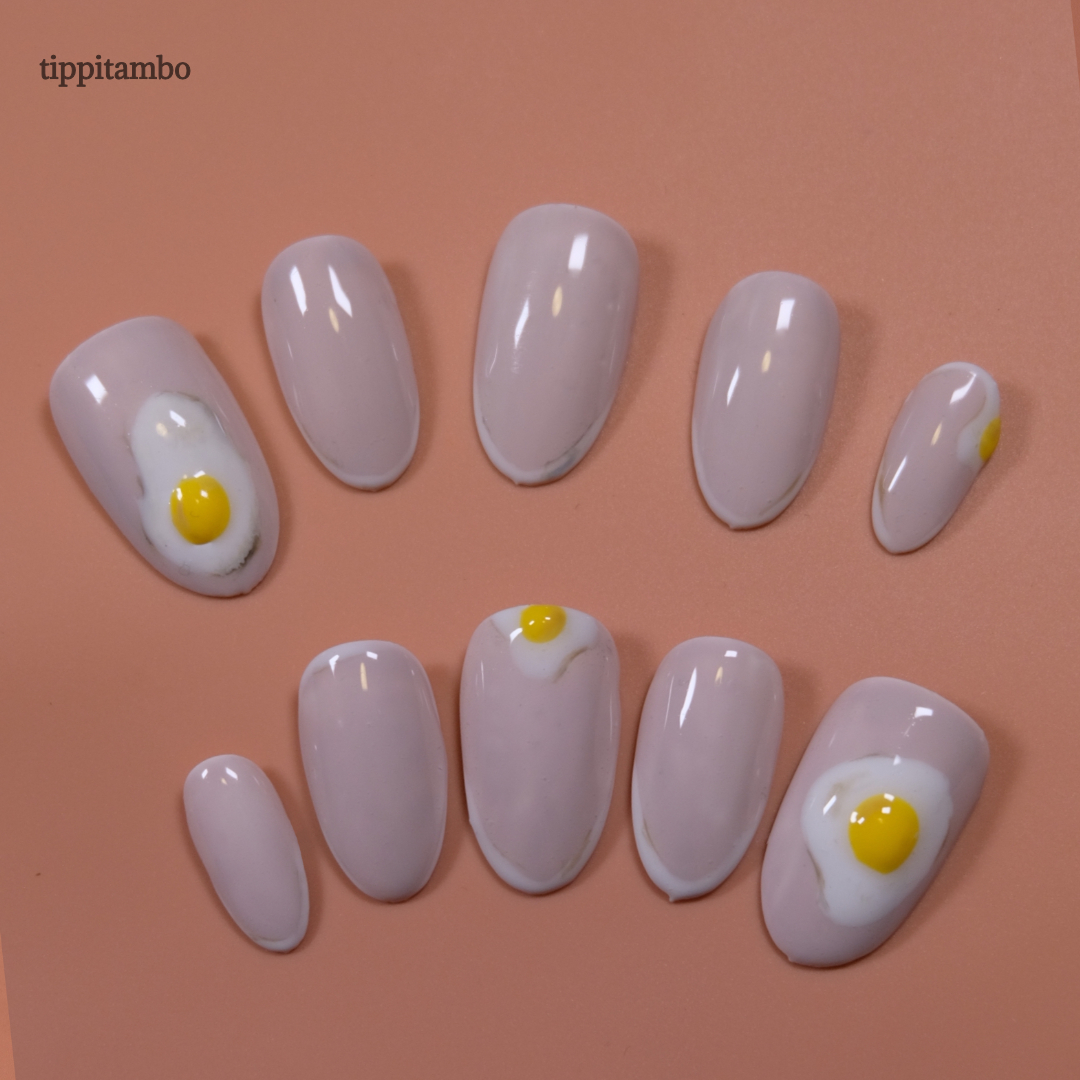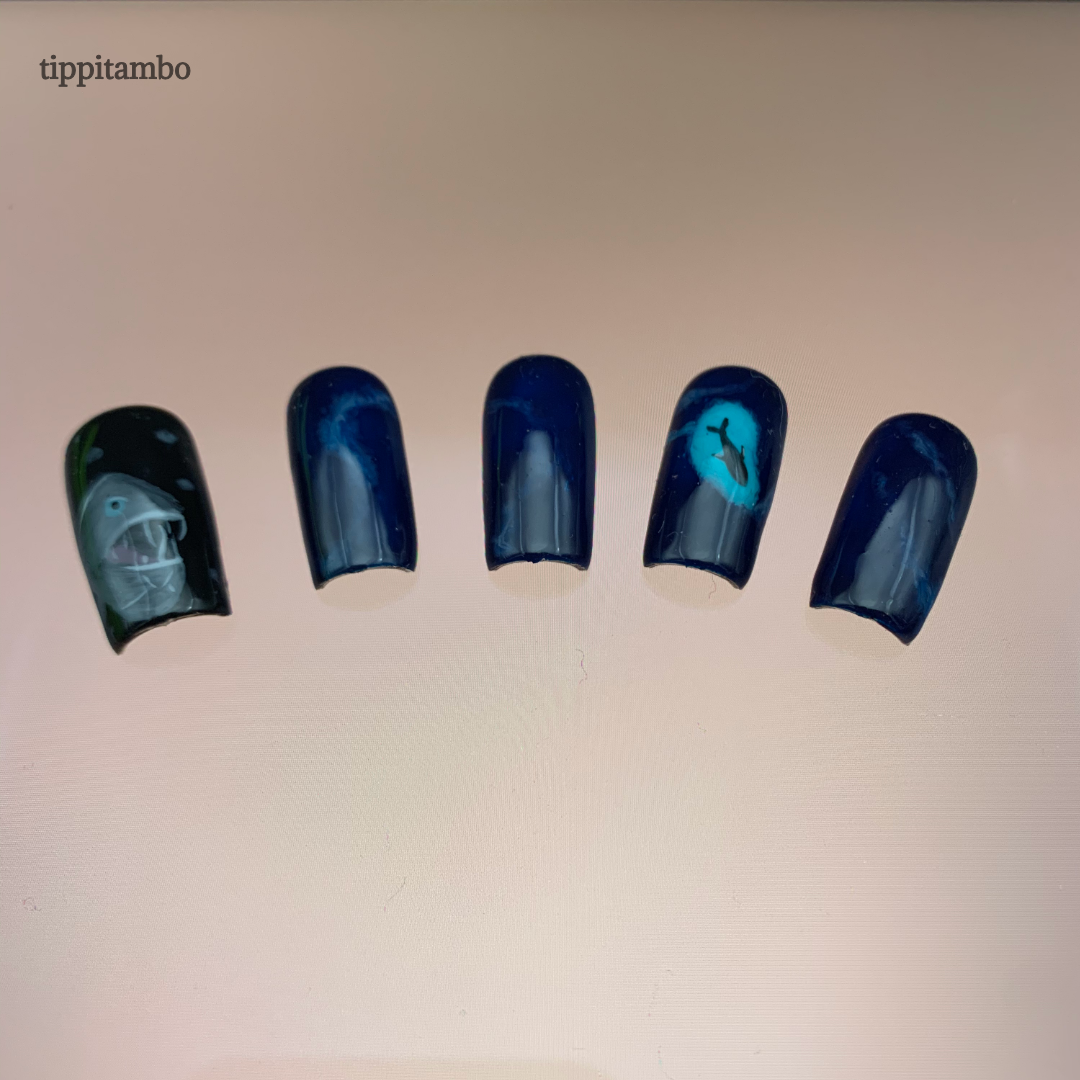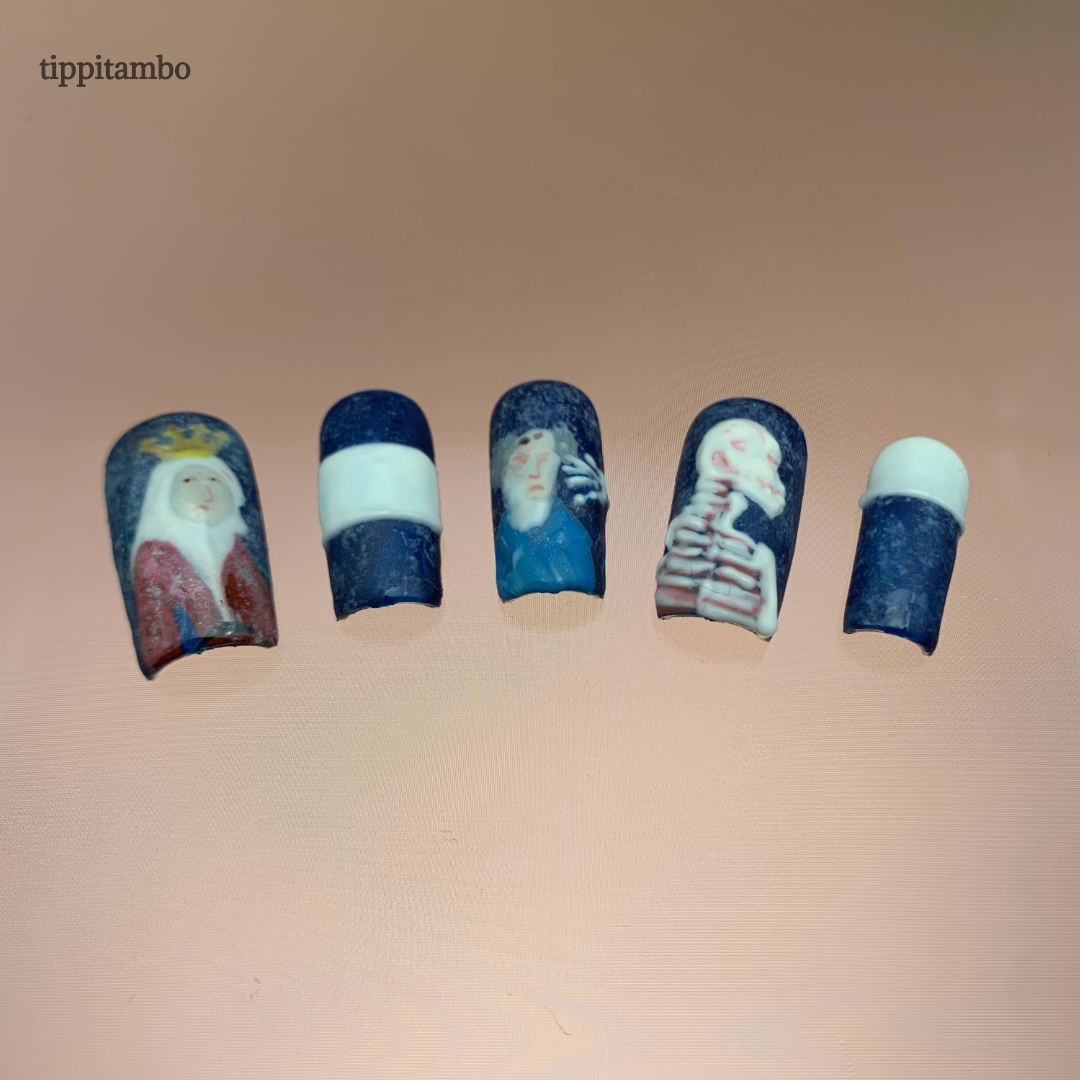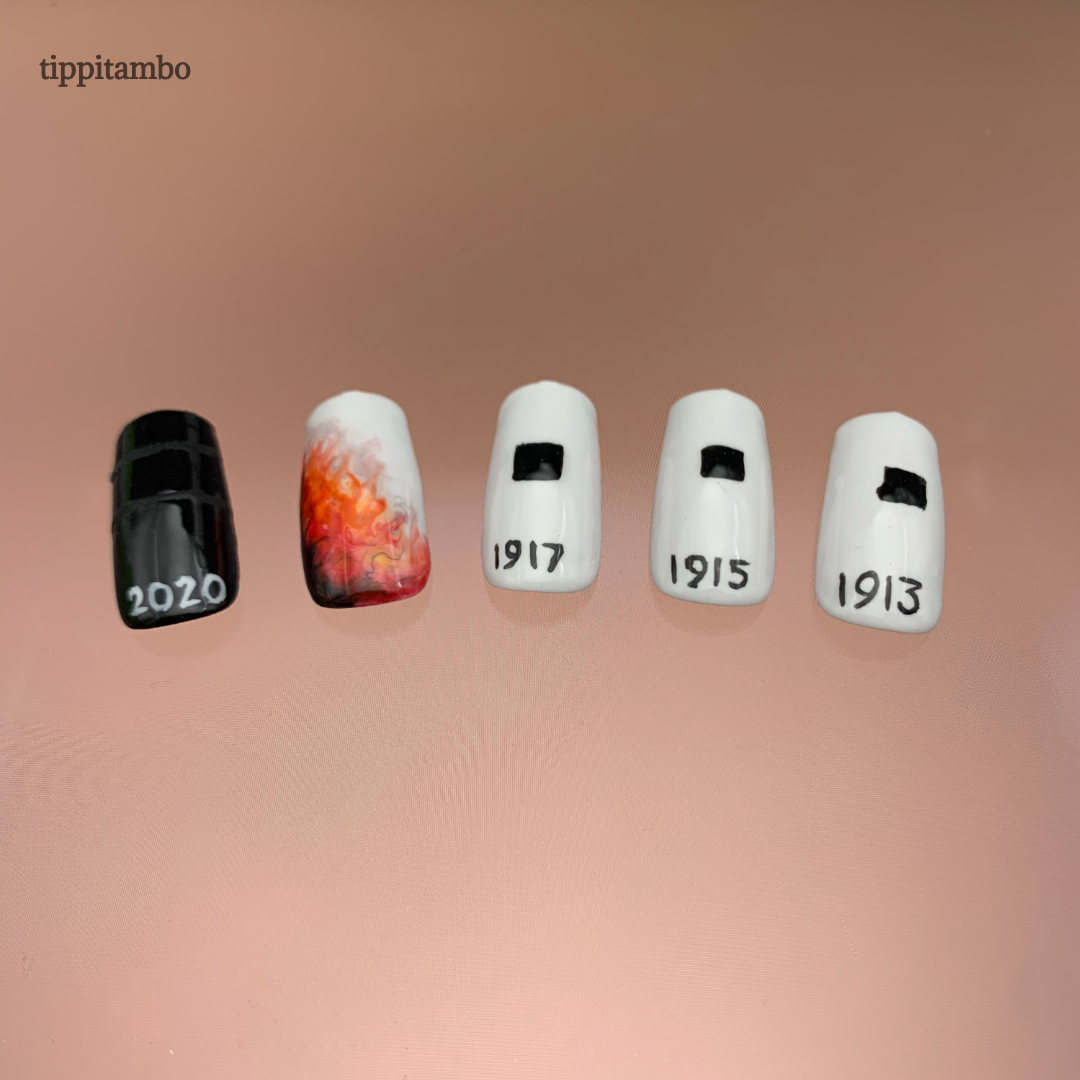The nail art tutorial below is for the bones accent nail design in the pictured set. Before you begin, don’t forget to prepare your nail surface with a DIY nail cleanser!
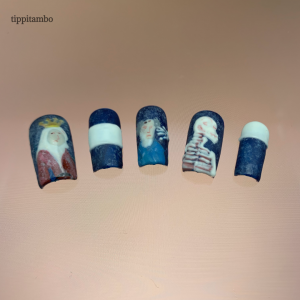
Instructions
Step 1
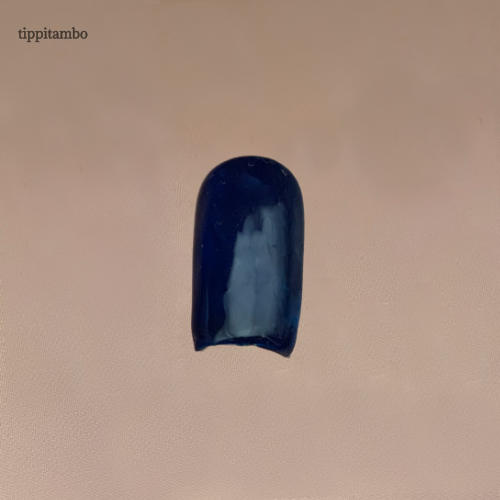
- Apply base coat and cure
- Apply dark blue coat and cure. Reapply dark blue coat until opaque and cure.
Step 2
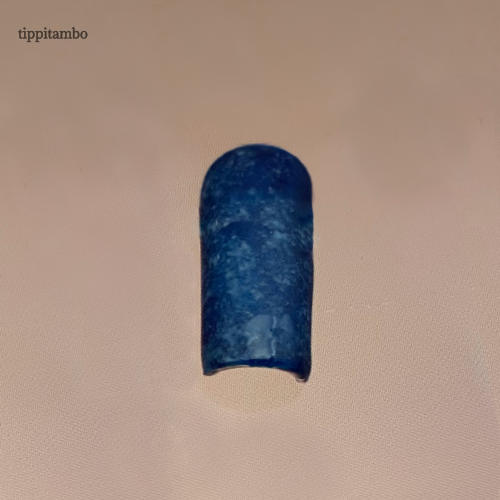
- Using the tap brush, dab grey gel lightly over the nail.
- Cure.
Step 3
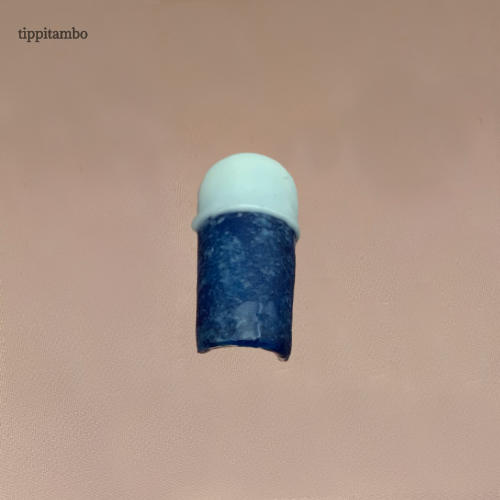
- At the base of the nail, draw a thick horizontal line using the off-white gel.
- Cure.
- Mix the off-white gel with the thick clear gel / sculpting gel until you get a gel that does can maintain its shape.
- Draw a line with the thick off-white gel at the top of the thick horizantal line on the nail.
- Add matte gel top coat and cure.
Commentary
The current COVID-19 pandemic is forcing me to reevaluate how I work, my social interactions and even to some extent, my value system. To make sense of this very stressful period, I began exploring similar historical periods to better understand how people in the past have dealt with these challenges and adjusted to what eventually became the future permanent changes. I spent some time learning about the Great Pestilence (the contemporary name for what we now call the Black Death), and felt moved to do a nail design based on an apt artistic movement arising from the fears and anxieties of people living during this time.
During the Great Pestilence, an artistic expression emerged in paintings, drawings and live performances called the Danse Macabre (the dance of death). The Danse Macabre would usually portray a skeleton holding the hands of a long line of living people, dancing away to their seemingly inevitable deaths. All classes of society, which was usually highly stratified at the time, would participate in the dance of death – from kings and clergy to merchants, and laborers.
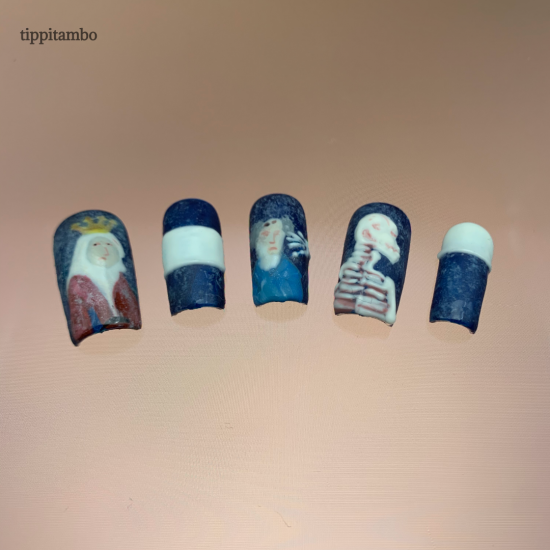
The impact of the plague was so profound in its transformation of society that it eventually gave rise to the Renaissance – a period that birthed great art, literature and architecture which we still admire today. No one, no matter their class or position in life, was safely protected from the plague, both fearing and eventually succumbing to death. And so, the plague became seen as the great equalizer – both economically and socially. The loss of skilled and unskilled laborers which produced valuable good for society, along with the economic strain from civic institutions from dealing with plague, reshaped key interactions among the different social classes. For example, nobles who were cash-strapped increased wages to pull scarce laborers to work on their lands, and merchants who wanted to gain social mobility married nobles.

